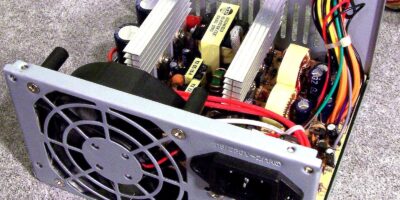The Global Internet of Things Devices Market size was estimated at USD 408.98 billion in 2023 and is expected to hit around USD 1,916.07 billion by 2033, poised to grow at a compound annual growth rate (CAGR) of 16.7% from 2024 to 2033.
1. Introduction
The Internet of Things (IoT) refers to the network of interconnected devices embedded with sensors, software, and other technologies to collect and exchange data over the internet. IoT devices span various applications, including consumer electronics, industrial automation, healthcare, smart cities, and more. These devices enable seamless communication between the physical and digital worlds, driving efficiencies, enhancing user experiences, and creating new business models.
2. Market Trends
2.1 Expansion in Consumer Electronics
IoT has revolutionized consumer electronics with smart home devices like thermostats, lighting systems, and home assistants. These devices offer convenience, energy efficiency, and enhanced security. The growing consumer preference for connected and automated living spaces is driving demand for smart home solutions. Integration with voice assistants like Amazon Alexa and Google Assistant further enhances the functionality and user experience of these devices.
2.2 Industrial IoT (IIoT)
In the industrial sector, IoT is transforming manufacturing, logistics, and supply chain management. IIoT devices, such as sensors and actuators, are used for predictive maintenance, real-time monitoring, and automation of industrial processes. The adoption of IIoT improves operational efficiency, reduces downtime, and enhances product quality. Key industries benefiting from IIoT include automotive, aerospace, and energy.
2.3 Smart Cities Initiatives
IoT is a cornerstone of smart city initiatives, enabling the management of urban infrastructure through connected devices. Smart city applications include intelligent transportation systems, smart street lighting, waste management, and environmental monitoring. These solutions enhance urban living by improving resource management, reducing energy consumption, and increasing the quality of public services.
2.4 Healthcare Applications
IoT devices in healthcare, such as wearable health monitors and connected medical equipment, facilitate remote patient monitoring, chronic disease management, and telemedicine. These devices enable real-time health data collection and analysis, enhancing patient care and reducing healthcare costs. The integration of IoT in healthcare is driving advancements in personalized medicine and preventive healthcare.
2.5 Growth in Edge Computing
The rise of edge computing is a significant trend in the IoT market. Edge computing involves processing data closer to the source (i.e., the IoT device) rather than in centralized data centers. This reduces latency, enhances real-time data processing, and improves the efficiency of IoT applications. Edge computing is critical for applications requiring immediate data analysis, such as autonomous vehicles and industrial automation.
2.6 Security and Privacy Concerns
As the number of connected devices grows, so do concerns about security and privacy. IoT devices are often targets for cyberattacks due to vulnerabilities in device firmware, software, and communication protocols. Addressing these concerns is critical, and manufacturers are increasingly focusing on implementing robust security measures, such as encryption, authentication, and regular firmware updates.
2.7 Integration with Artificial Intelligence (AI)
AI integration is enhancing the capabilities of IoT devices by enabling data analysis, pattern recognition, and decision-making. AI-powered IoT devices can autonomously perform tasks, adapt to changing conditions, and provide predictive insights. This integration is driving innovation in various applications, from smart homes to industrial automation, creating more intelligent and responsive IoT ecosystems.
2.8 Sustainable IoT Solutions
Sustainability is becoming a key consideration in the development and deployment of IoT devices. Manufacturers are focusing on creating energy-efficient devices and using sustainable materials to reduce the environmental impact. IoT solutions are also being used to monitor and manage resources, such as energy and water, contributing to environmental conservation efforts.
3. Market Dynamics
3.1 Market Drivers
- Technological Advancements: Innovations in sensors, communication technologies, and data analytics are driving the growth of IoT devices.
- Growing Adoption Across Industries: IoT applications are expanding across various sectors, including consumer electronics, healthcare, industrial, and smart cities.
- Increased Connectivity: The proliferation of high-speed internet and 5G networks enhances the connectivity and functionality of IoT devices.
- Demand for Automation and Efficiency: Organizations are increasingly adopting IoT solutions to automate processes, improve efficiency, and reduce operational costs.
3.2 Market Restraints
- Security and Privacy Issues: The vulnerability of IoT devices to cyberattacks and data breaches poses a significant challenge.
- Interoperability Challenges: Lack of standardization and compatibility issues among different IoT devices and platforms can hinder integration and functionality.
- High Implementation Costs: The cost of deploying and maintaining IoT systems can be prohibitive for some organizations, especially small and medium-sized enterprises (SMEs).
3.3 Market Opportunities
- Emerging Markets: Developing regions with growing digital infrastructure and increasing adoption of smart technologies present significant growth opportunities.
- Edge Computing: The demand for real-time data processing and low-latency applications drives the adoption of edge computing solutions.
- AI Integration: The integration of AI with IoT devices creates opportunities for more advanced and intelligent applications.
- Sustainable Solutions: The focus on sustainability and energy efficiency opens avenues for developing eco-friendly IoT devices and solutions.
3.4 Market Challenges
- Scalability Issues: Scaling IoT solutions to accommodate a large number of devices and data can be challenging.
- Regulatory Compliance: Adhering to regulatory requirements and standards for IoT devices, particularly in healthcare and industrial applications, can be complex.
- Data Management: Managing the vast amounts of data generated by IoT devices requires robust data analytics and storage solutions.
4. Market Demand
4.1 Consumer Electronics
The demand for IoT devices in consumer electronics is driven by the growing preference for smart home solutions and connected devices. Smart thermostats, security cameras, lighting systems, and home assistants are increasingly popular among consumers seeking convenience, energy efficiency, and enhanced security. The integration of IoT with voice assistants and mobile applications further boosts demand.
4.2 Industrial Sector
In the industrial sector, the demand for IoT devices is fueled by the need for automation, real-time monitoring, and predictive maintenance. IIoT devices enable manufacturers to optimize production processes, reduce downtime, and improve product quality. Industries such as automotive, aerospace, and energy are significant adopters of IIoT solutions for enhancing operational efficiency and competitiveness.
4.3 Healthcare Sector
The healthcare sector’s demand for IoT devices is driven by the need for remote patient monitoring, chronic disease management, and telemedicine. Wearable health monitors, connected medical devices, and smart healthcare systems facilitate real-time health data collection and analysis, improving patient care and reducing healthcare costs. The integration of IoT with electronic health records (EHR) and telehealth platforms further drives demand.
4.4 Smart Cities
Smart city initiatives drive demand for IoT devices that enable the management of urban infrastructure and services. Applications include intelligent transportation systems, smart street lighting, waste management, and environmental monitoring. These solutions enhance urban living by improving resource management, reducing energy consumption, and increasing the quality of public services.
4.5 Retail Sector
In the retail sector, IoT devices are used for inventory management, customer engagement, and personalized shopping experiences. Smart shelves, RFID tags, and connected point-of-sale systems enable retailers to optimize inventory, track products in real-time, and provide personalized recommendations to customers. The adoption of IoT in retail enhances operational efficiency and customer satisfaction.
5. Market Products
5.1 Sensors
Sensors are fundamental components of IoT devices, enabling the collection of data from the physical environment. Types of sensors used in IoT applications include temperature sensors, pressure sensors, motion sensors, and environmental sensors. These sensors are used across various industries for monitoring and data collection.
5.2 Actuators
Actuators are devices that receive signals from sensors and perform actions based on those signals. Examples of actuators include motors, valves, and relays. In IoT applications, actuators are used for controlling processes and systems, such as adjusting temperatures, opening valves, or triggering alarms.
5.3 Connectivity Modules
Connectivity modules facilitate communication between IoT devices and networks. These modules support various communication protocols, including Wi-Fi, Bluetooth, Zigbee, and cellular networks. Connectivity modules are essential for enabling data transmission and device interoperability in IoT ecosystems.
5.4 Edge Devices
Edge devices are responsible for processing data at the edge of the network, closer to the source of data generation. These devices include gateways, edge servers, and edge AI processors. Edge devices reduce latency and enhance real-time data processing, making them critical for applications requiring immediate data analysis.
5.5 IoT Platforms
IoT platforms provide the software infrastructure for managing, analyzing, and integrating IoT devices and data. These platforms offer features such as device management, data analytics, and application development tools. IoT platforms enable seamless integration and interoperability of IoT devices within an ecosystem.
5.6 Smart Appliances
Smart appliances, such as smart refrigerators, washing machines, and thermostats, are increasingly popular in consumer electronics. These devices are connected to the internet and can be controlled remotely via mobile applications or voice assistants. Smart appliances offer convenience, energy efficiency, and enhanced functionality.
5.7 Wearables
Wearable IoT devices, such as fitness trackers and smartwatches, are widely used for health monitoring and personal fitness. These devices collect data on physical activity, heart rate, sleep patterns, and other health metrics, providing users with real-time insights into their health and fitness levels.
5.8 Connected Vehicles
Connected vehicles are equipped with IoT devices for navigation, diagnostics, and infotainment. These devices enable real-time communication between vehicles and infrastructure, enhancing safety, efficiency, and user experience. Connected vehicle technologies support applications such as autonomous driving, fleet management, and vehicle-to-everything (V2X) communication.
Receive the FREE Sample Report of Internet of Things Devices Market Research Insights @ https://stringentdatalytics.com/sample-request/internet-of-things-devices-market/13049/
Market Segmentations:
Global Internet of Things Devices Market: By Company
• Samsung Electronics
• Apple
• Lenovo
• ASUS
• Acer
• Huawei
• Coolpad
• LG Electronics
• Google
• Panasonic
• Microsoft
• Brother Industries
• Honeywell
• Fitbit
• Lenovo
• Xiaomi
• Recon Instruments
• Nikon
• August Home
• Philips
Global Internet of Things Devices Market: By Type
• Computing Devices
• Smart Wearables
• Smart Home Appliances
• Others
Global Internet of Things Devices Market: By Application
• Healthcare
• Industrial
• Transportation and Logistics
• Media and Entertainment
• Others
Regional Analysis of Global Internet of Things Devices Market
All the regional segmentation has been studied based on recent and future trends, and the market is forecasted throughout the prediction period. The countries covered in the regional analysis of the Global Internet of Things Devices market report are U.S., Canada, and Mexico in North America, Germany, France, U.K., Russia, Italy, Spain, Turkey, Netherlands, Switzerland, Belgium, and Rest of Europe in Europe, Singapore, Malaysia, Australia, Thailand, Indonesia, Philippines, China, Japan, India, South Korea, Rest of Asia-Pacific (APAC) in the Asia-Pacific (APAC), Saudi Arabia, U.A.E, South Africa, Egypt, Israel, Rest of Middle East and Africa (MEA) as a part of Middle East and Africa (MEA), and Argentina, Brazil, and Rest of South America as part of South America.
Click to Purchase Internet of Things Devices Market Research Report @ https://stringentdatalytics.com/purchase/internet-of-things-devices-market/13049/
6. Market Opportunities
6.1 Emerging Markets
Emerging markets with growing digital infrastructure and increasing adoption of smart technologies present significant growth opportunities for IoT devices. Regions such as Asia-Pacific, Latin America, and Africa are witnessing rapid urbanization and digital transformation, creating demand for IoT solutions in various sectors.
6.2 Edge Computing
The demand for real-time data processing and low-latency applications drives the adoption of edge computing solutions. Edge computing enhances the efficiency of IoT applications by reducing latency, enabling real-time data analysis, and improving the performance of connected devices. Opportunities exist for developing advanced edge computing solutions to meet the needs of various IoT applications.
6.3 AI Integration
The integration of AI with IoT devices creates opportunities for more advanced and intelligent applications. AI-powered IoT devices can autonomously perform tasks, adapt to changing conditions, and provide predictive insights. AI integration enhances the functionality of IoT devices in applications such as smart homes, industrial automation, and healthcare.
6.4 Sustainable Solutions
The focus on sustainability and energy efficiency opens avenues for developing eco-friendly IoT devices and solutions. Manufacturers can explore opportunities by creating energy-efficient devices, using sustainable materials, and developing IoT solutions for environmental monitoring and resource management.
6.5 5G Technology
The deployment of 5G networks presents opportunities for IoT devices by providing high-speed, low-latency connectivity. 5G technology enhances the performance of IoT applications, such as autonomous vehicles, smart cities, and industrial automation, enabling faster data transmission and more reliable connections.
6.6 Vertical-Specific Solutions
Developing vertical-specific IoT solutions tailored to the unique needs of different industries creates opportunities for manufacturers. Custom IoT solutions designed for specific applications, such as healthcare, retail, or industrial automation, provide added value and differentiate products in the market.
7. Market Challenges
7.1 Security and Privacy Concerns
The vulnerability of IoT devices to cyberattacks and data breaches poses a significant challenge. Ensuring the security and privacy of IoT devices and data is critical to gaining consumer trust and complying with regulatory requirements. Addressing security challenges requires implementing robust security measures, such as encryption, authentication, and regular firmware updates.
7.2 Interoperability Issues
Lack of standardization and compatibility issues among different IoT devices and platforms can hinder integration and functionality. Interoperability challenges affect the seamless communication and interaction of IoT devices within an ecosystem. Developing standardized protocols and ensuring compatibility between devices are essential to overcoming these challenges.
7.3 Scalability
Scaling IoT solutions to accommodate a large number of devices and data can be challenging. As the number of connected devices grows, managing and processing the vast amounts of data generated becomes increasingly complex. Developing scalable IoT architectures and data management solutions is critical to addressing this challenge.
7.4 Regulatory Compliance
Adhering to regulatory requirements and standards for IoT devices, particularly in healthcare and industrial applications, can be complex. Regulatory compliance involves ensuring the safety, security, and privacy of IoT devices and data. Manufacturers must navigate regulatory frameworks and ensure compliance to successfully deploy IoT solutions.
7.5 Data Management
Managing the vast amounts of data generated by IoT devices requires robust data analytics and storage solutions. Efficiently collecting, storing, and analyzing IoT data is essential for deriving actionable insights and enhancing the functionality of IoT applications. Developing advanced data management solutions is critical to addressing this challenge.
8. Market Forecast
8.1 Market Size and Growth
The IoT devices market is expected to experience substantial growth from 2024 to 2030. The increasing adoption of IoT across various sectors, coupled with advancements in connectivity, sensors, and data analytics, will drive market expansion. The market size is projected to grow as more industries and consumers adopt IoT solutions to enhance efficiency, productivity, and user experiences.
8.2 Regional Outlook
- North America: North America is expected to maintain a leading position in the IoT devices market, driven by technological advancements, high adoption rates in consumer electronics, and strong digital infrastructure. The region’s focus on smart city initiatives and industrial automation further supports market growth.
- Europe: Europe is anticipated to see significant growth, supported by increasing investments in smart city projects, industrial IoT, and healthcare applications. The region’s emphasis on sustainability and energy efficiency also drives demand for eco-friendly IoT solutions.
- Asia-Pacific: The Asia-Pacific region is projected to experience rapid growth due to expanding digital infrastructure, rising investments in smart technologies, and increasing adoption of IoT in emerging markets. Countries like China, India, and Japan are key contributors to the region’s market growth.
- Latin America: Growth in Latin America will be driven by investments in digital transformation and smart city initiatives, particularly in Brazil and Mexico. The region’s focus on improving urban infrastructure and public services supports the adoption of IoT solutions.
- Middle East and Africa: The Middle East and Africa are expected to see moderate growth, with increasing adoption of IoT technologies in smart city projects, industrial automation, and healthcare. The region’s investments in digital infrastructure and technology development contribute to market expansion.
8.3 Technology Trends
The future of IoT devices will be shaped by continuous advancements in connectivity, sensors, and data analytics. Emerging trends include the development of 5G-enabled IoT devices, enhanced edge computing capabilities, and AI integration. Manufacturers will focus on creating more intelligent, efficient, and secure IoT devices to meet evolving market demands.
8.4 Competitive Landscape
The IoT devices market is characterized by a competitive landscape with numerous players offering a wide range of products and solutions. Key market players include technology giants, specialized manufacturers, and emerging startups. Companies will focus on innovation, customization, and strategic partnerships to gain a competitive advantage and capture market share.
8.5 Market Strategies
- Product Innovation: Developing innovative IoT devices with advanced features, such as AI integration and edge computing capabilities, to meet diverse customer needs.
- Customization: Offering customized IoT solutions tailored to specific industry requirements and applications to differentiate products and attract niche markets.
- Expansion into Emerging Markets: Exploring growth opportunities in developing regions with untapped potential and rising demand for IoT technologies.
- Sustainability: Emphasizing sustainability by developing energy-efficient devices and adopting eco-friendly manufacturing practices to appeal to environmentally conscious consumers.
Answered Questions of Internet of Things Devices Market
- What is the current size of the target market in terms of revenue, units sold, or other relevant metrics?
- Who are the key competitors in the market, and what is their market share?
- How has the market evolved over the past decade, and what are the key historical developments that have influenced its trajectory?
- What are the primary demographic characteristics of the target customer base, and how have these demographics changed over time?
- What are the main factors driving or inhibiting market growth, and how have these factors evolved in recent years?
- What technological advancements have impacted the market, and how have these changes affected product offerings and consumer preferences?
- How have regulatory changes, if any, influenced the market landscape, and what is the regulatory outlook for the future?
- What economic factors, such as recessions or expansions, have historically affected consumer spending patterns in the market?
- How has consumer behavior changed over time, and what are the current trends in purchasing habits and preferences?
- What emerging trends and opportunities are expected to shape the future of the market, and how can businesses position themselves to capitalize on these trends?
About Stringent Datalytics
Stringent Datalytics offers both custom and syndicated market research reports. Custom market research reports are tailored to a specific client’s needs and requirements. These reports provide unique insights into a particular industry or market segment and can help businesses make informed decisions about their strategies and operations.
Syndicated market research reports, on the other hand, are pre-existing reports that are available for purchase by multiple clients. These reports are often produced on a regular basis, such as annually or quarterly, and cover a broad range of industries and market segments. Syndicated reports provide clients with insights into industry trends, market sizes, and competitive landscapes. By offering both custom and syndicated reports, Stringent Datalytics can provide clients with a range of market research solutions that can be customized to their specific needs.
Reach US
Stringent Datalytics
+1 346 666 6655
Social Channels:
Linkedin | Facebook | Twitter | YouTube




Leave a Reply